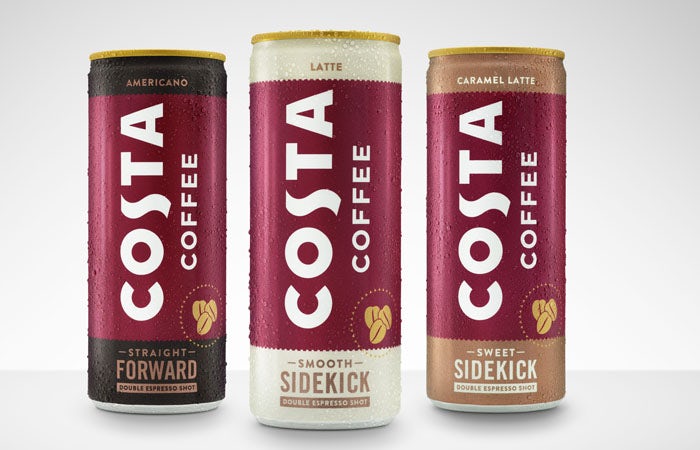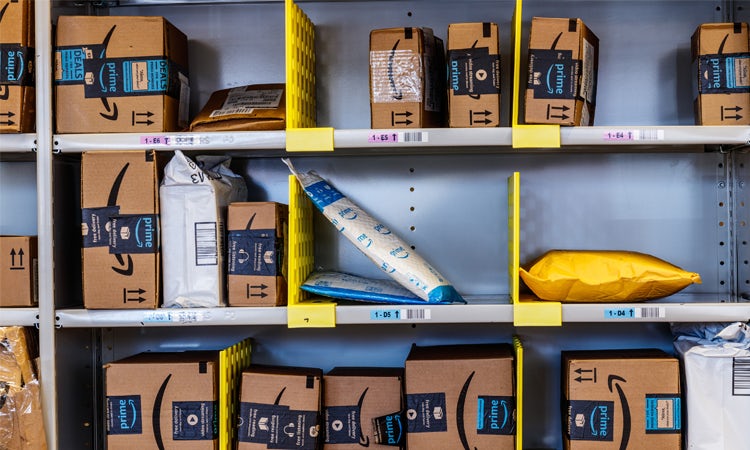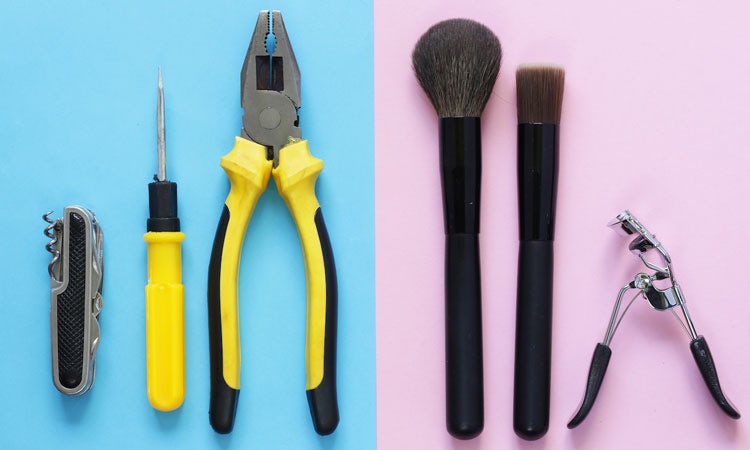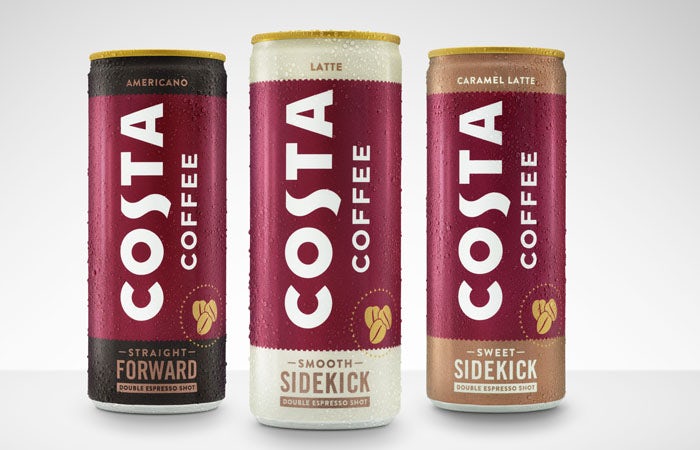Coca-Cola, Amazon, Diageo: 5 things that mattered this week and why
Catch up on all this week’s big marketing news including Coca-Cola and Costa’s new product launch, the world’s most valuable brands and how Diageo is getting its marketers to think more creatively.
 Coca-Cola launches ready-to-drink Costa product to rival Starbucks
Coca-Cola launches ready-to-drink Costa product to rival Starbucks
Coca-Cola is at it again – this time with a new ready-to-drink Costa product. Ever since the FMCG giant bought Costa last year CEO James Quincey has been clear that Coke has been preparing to break into the ready-to-drink market.
Costa Coffee Ready-To-Drink includes three of the coffee brand’s most popular variants – Classic Latte, Caramel Latte and Black Americano – and claims to contain 30% less sugar than it rivals.
It is, once again, all part of Coke’s plan to become a total beverage company. By now everyone is aware of the soft drink powerhouse’s strategy to diversify its portfolio and the acquisition of Costa is significant in that it is helping it break into the growing coffee trend.
The two companies are working together to combine Costa’s coffee know-how and Coke’s marketing expertise in a move it hopes will streamline innovation. For Coke this means having an already established coffee brand which also has a multitude of data at its fingertips. For Costa, it is access to Coke’s global marketing network and large budgets.
A marketing campaign will soon follow for Costa Coffee Ready-To-Drink and we can assume Coke will bring up the brand’s low calorie and low sugar credentials. As it is Costa and Coke’s first launch since the acquisition, people will be watching closely to see how it goes (and tastes). MF
READ MORE: Costa moves into ready-to-drink market with first launch since Coca-Cola acquisition
Amazon overtakes Google and Apple as world’s most valuable brand

In case you didn’t already know it, Amazon is pretty big. But now it has the accolade to prove it.
This week, Kantar unveiled its latest BrandZ ranking of the world’s most valuable brands in 2019, and yes you guessed it, Amazon is this year’s number one with a brand value of $315.5bn.
This is especially significant because it has broken the long reign of Google and Apple, which have between them held the top spot for the past 12 years.
Over the past 12 months, Amazon’s value has grown by 52%, while Apple and Google grew just 3% and 2% respectively.
This shows it is a brand that knows how to meet and adapt to fast-changing consumer needs – and not just in its own tech space. By plugging itself into other industries, Amazon has gone from being an online, price-led retailer to an ‘ecosystem brand’. Brands with five or more areas of business, such as Amazon, are on average four times bigger and growing 10 times faster than others.
Taking this into consideration, this level of growth will no doubt be seen in Chinese consumer technology brands Meituan and Didi Chuxing – both newcomers this year – given the volume potential of China and their tech capabilities.
New entrants such as these, alongside the likes of Instagram, Uber and Netflix, which are fast rising up the ranking, are making this an increasingly challenging space to operate and compete in.
There have been nine dropouts from the ranking this year. While this doesn’t necessarily mean they’re not growing, it means brands have to work much harder now to stay in the race – especially when you’ve got brands like Amazon spreading their tentacles all over the place. EH
READ MORE: Amazon beats Apple and Google to become the world’s most valuable brand
Diageo enrols all marketers in creativity training

All 1,200 marketers at Diageo have been enrolled on a year-long creativity training programme intended to “educate, inspire and challenge” them to produce their best work.
Dubbed ‘Creative Sparks’, the scheme focuses on every aspect of creativity, from powering creativity with media and how to use insight, to best practice in briefing, how to nurture ideas and using measurement to unlock creative.
Led by global senior vice-president of scotch, Haig Club and premium rums, Kathy Parker, the programme will also feature inspiration sessions held between Diageo’s agencies and marketers.
The Creative Sparks programme follows the implementation in 2017 of Catalyst, Diageo’s marketing effectiveness tool, which provides instant data to the company’s marketers. Catalyst is designed to pull together different data sources to determine the right budget for each brand in the portfolio based on potential profit and the performance of previous marketing programmes, while also assessing the likely impact of any planned activity.
While the wider ad industry praised Diageo’s commitment to effectiveness, others questioned whether this reliance on data would kill the company’s creative spark. However, the introduction of this new programme suggests Diageo wants creativity front-and-centre in its marketers’ minds, even if it is then backed up with data and insight. CR
READ MORE: Diageo introduces creativity training to ‘inspire and challenge’ marketers
Brands are increasingly measuring creative effectiveness

There are myriad ways to measure the effectiveness of media. Yet doing the same for creative isn’t quite so simple. However, it looks like marketers are trying to add some science to the art.
According to an exclusive survey of more than 400 brand marketers conducted by Marketing Week, more than two-thirds of marketers say they measure the effectiveness of their creative. This compares to three-quarters who measure the effectiveness of media, and – perhaps surprisingly – the 12% who don’t measure either.
In the past, the merits of creative have largely been celebrated through awards ceremonies and lots of industry back-slapping. While it’s nice to have a Cannes Lion on the shelf, it doesn’t exactly give any quantifiable measure to creative that brands can gain insight, and learn, from.
But this is changing. While old-fashioned methods are still preferred, neuroscience and biometrics are increasingly – albeit slowly – being used by marketers to test creativity pre-launch.
This is important because these kinds of methods measure subconscious responses to creative rather than explicit responses, which people are not always honest about (whether intentionally or not).
Putting some numbers behind the emotional impact campaigns have means marketers can begin to better understand what makes people feel good, what kind of content falls flat, and how to build a better emotional connection with their consumers.
And, as brands are beginning to find out, creative that sparks an emotional connection with consumers is much more likely to lead to action. EH
READ MORE: Are brands measuring the impact of creativity?
ASA bans ‘harmful’ gender stereotypes in adverts

It’s been met with conflicting opinions (on social media, anyway) but a landmark ban on ‘harmful’ gender stereotyping in advertising is going to force marketers to think more creatively, and that’s definitely not a bad thing.
The new advertising rules came into force today (14 June) after the Advertising Standards Authority (ASA) determined harmful stereotypes in advertising can contribute to inequality in society.
Things like seeing a woman struggle to park a car or slave away in the kitchen, or showing a man failing at household chores or in a hapless situation with a baby, risk sending the wrong message to both children and adults, which could stem their development and restrict their choices and ambitions, according to the watchdog.
And the data doesn’t lie.
Research from Kantar shows men are 38% more likely to be featured more prominently than women in advertising. And when both genders appear, men feature more frequently than women in a leading role (21% versus 15%)
However, the ban doesn’t mean marketers are totally restricted. In fact, the ASA is being rather clear about the idea that the rule will not prevent ads from featuring a woman doing the shopping or a man doing DIY tasks.
There’s an entire host of creative situations that will pass the ruling, but advertisers must be cautious they don’t portray gender stereotypes that could send a harmful message. But they mustn’t play it too safe either or risk being boring. It’s a fine line.
Jane Bloomfield, managing director of Kantar UK, says: “Advertisers can’t play it safe or avoid the issue, paralysed by fear of getting it wrong and alienating customers or receiving a ban from the ASA.”
It’s vital marketers recognise the ASA hasn’t banned gender stereotyping outright, but that it is working to identify specific harms that can be prevented – and won’t be afraid to use its hammer on those that break the rules. EL
READ MORE: Ban on harmful gender stereotypes in advertising comes into force
 Coca-Cola launches ready-to-drink Costa product to rival Starbucks
Coca-Cola launches ready-to-drink Costa product to rival Starbucks





